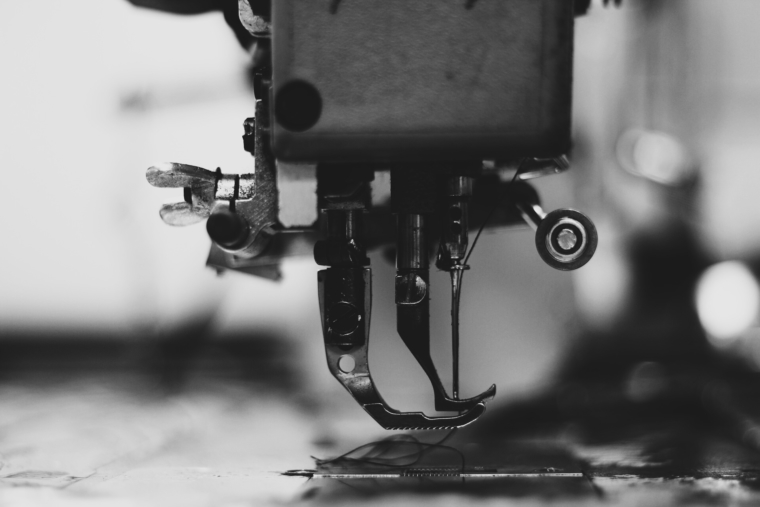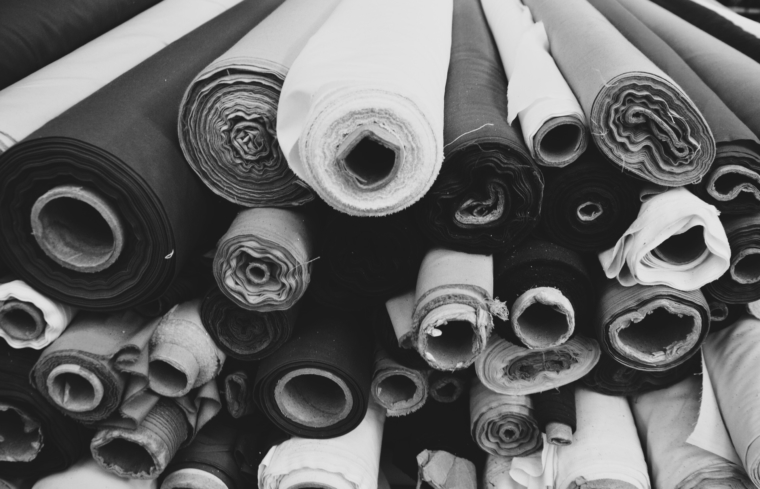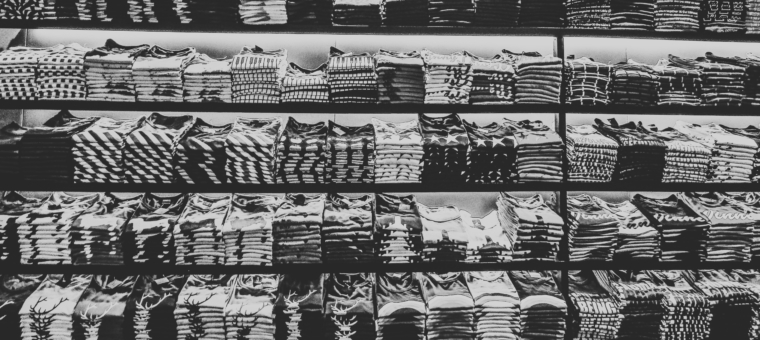
DE
Die Pariser Fashion Week ist für mich wirklich immer sehr inspirierend und ich gehe oft mit vielen neuen Ideen und einem prallen Wunschzettel für die nächste Saison nach Hause. Aber ich bin nicht nur auf die Shows gegangen, sondern habe auch die Stores besucht und dabei ist mir einmal mehr klar geworden was das eigentliche Problem der Fashion Welt ist: Überproduktion.
Abseits der offenkundigen Überproduktion der Fast Fashion Discounter a la H&M ist das Problem auch bei den Luxuslabels längst angekommen. Ich gebe euch ein konkretes Beispiel: Ich liebe die Designs von Balenciaga. Der aktuelle Designer Demna ist mein absoluter Favorit. Motiviert von der Fall-Winter Kollektion, wollte ich einen Blick in den neuen Flagshipstore auf der Avenue Montaigne werfen. Wenn man den Store betritt wird man irgendwie sehr schnell aus seiner Euphorie wieder auf den (Balenciaga) Teppich geholt. Im Store stapeln sich die Taschen, Kappen, Hoodies und Shirts. Auf nachfrage ist alles in allen Größen vorhanden und außer den Preisen und dem Setting hat man nicht das Gefühl Luxus zu kaufen. Man steht vor der Balenciaga Schafsfell Lederjacke – tolles Design, tolle Jacke, stolzer Preis aber in mir kommt kein Kaufimpuls auf. Ich habe die Jacke in wirklich jedem Store, Luxuskaufhaus und bei Instgram sowieso schon tausendmal gesehen. Die Balenciaga Kappen (auch zu oft gesehen) stapeln sich im Store und auch die so gefeierten neuen Balenciaga Sneakers gibt es in allen Farben und Größen. Desillusioniert steht man 10 Minuten später wieder auf der Avenue Montaigne. Gekauft habe ich nichts, werde ich wohl diese Saison auch nicht mehr machen.
Es klingt fast Grotesk aber Balenciaga ist mir mit der aktuellen Strategie nicht exklusiv genug. Ich habe das Gefühl hier soll einfach der schnelle Euro verdient werden. Zu viel, zu schnell und auf einmal läuft jeder der es sich irgendwie leisten kann mit Balenciaga Schals, Hoodies und Schuhen herum. Da möchte ich nicht mitmachen. Wenn ich etwas für so unglaublich viel Geld kaufe, dann möchte ich eigentlich fast niemand anderes damit sehen. Heißt, ich kaufe keinen Pullover für 600€ mit dem dann halb Hong Kong und Düsseldorf Oberkassel herumrennt. Ich finde Luxus heißt auch und insbesondere, dass etwas eben nicht überall und unendlich verfügbar ist.
Die Überproduktion ist natürlich wie Eingangs erwähnt bei weitem kein Balenciaga-exklusives Problem. Fast alle großen Luxuslabels fahren eine Marktstrategie wie ZARA. Die Kollektionen sind unnötig groß und es werden unendlich viele Kleidungsstücke produziert die kein Mensch braucht und kauft. Wie das im schlimmsten Falle endet sieht man bei den italienischen Luxusmarken Prada & Gucci, Moncler, Armani etc. Ich habe deren Stores, sei es in Milano, Paris oder Los Angeles seit Jahren nicht mehr betreten. Es gibt absolut keinen Grund mehr die Sachen dort zum Vollpreis zu kaufen. Diese Labels produzieren so absurd viel, dass letztlich fast alles in Outlets wie „Space“ bei Florenz, Roermond, Metzingen o.ä. landet. Jedes Mal wenn ich etwas von Prada oder Gucci sehe, dass mir gefällt denke ich mir: Alles klar warte ich noch ein halbes Jahr dann liegt es im Outlet und dann schauen wir mal ob es mir noch gefällt. Meistens haben sich dann einige Wünsche schon ganz von selbst erledigt weil man sie bei Instagram wirklich bei jedem Blogger oder Rich-Kid gesehen hat. Falls man immer noch gefallen daran hat, kann man das Objekt seiner Begierde zu einem relativ angemessenen Preis in den Outlets kaufen. So war es bspw. bei einer meiner Gucci Taschen mit Blumenprint.
Jetzt könnte man mir entgegenhalten dass viele Labels nicht in Outlets zu finden sind. Stimmt, aber hier kommen dann die vielen Online Luxushändler ins Spiel. Letzten Monat noch gab es dort fast die gesamte Balenciaga Kollektion der auslaufenden Saison für fast 70% weniger. Das zeigt mir einfach, dass viel zu viel produziert wurde. Ich möchte hiermit die Outlets und Online Stores nicht angreifen sondern prangere einfach dieses sinnlose produzieren an.
Das Gleichgewicht von Angebot und Nachfrage ist in der Modewelt schon lange vollkommen aus den Fugen geraten. Im Normal- oder Niedrigpreissegment denke ich mir seit Jahren bei jedem H&M Besuch: Wow das wird alles am Ende der Saison verbrannt. Wer braucht so viel Kleidung?!
Im Luxussegment finde ich es aber umso schlimmer weil man einfach absurde (und immer weiter steigende) Preise aufruft und annehmen sollte, dass sich diese eben auch durch die Seltenheit und geringen Produktionsmengen ergeben. Doch das ist nicht der Fall.
DER DURCHSCHNITTLICHE DEUTSCHE HAUSHALT GAB ÜBRIGENS IMJAHR 2016 PRO MONAT 108€ FÜR BEKLEIDUNG UND SCHUHE AUS.
Man muss kein Mathematiker sein, um zu erkennen, dass das Angebot die Nachfrage und Kaufkraft bei weitem übersteigt. Wieviel in den Textilindustrie produziert bzw. vernichtet wird, darüber gibt es keine Daten. Einem Bericht des dänischen Fernsehens TV2 zufolge:
VERBRENNT H&M ALLERDINGS IN FOLGE MASSIVER ÜBERPRODUKTION ALLEINE SEIT 2013 ÜBER 12 TONNEN AN UNVERKAUFTER KLEIDUNG.
Zeit etwas zu ändern.
Ich vertreibe meine eigene Mode in meinem Shop und achte bei der Produktion darauf, mich stark an der Nachfrage zu orientieren. Ich mache weniger Shirts und Hoodies als nachgefragt werden und kann somit garantieren, dass jeder der ein Shirt kauft etwas ziemlich einzigartiges besitzt und zum anderen laufe ich nicht Gefahr auf Bergen von Kleidung sitzen zu bleiben. Ein solches Model lässt sich sehr leicht auch auf große Labels übertragen und wird von einigen auch schon praktiziert. Nachhaltigkeit, Exklusivität und Nachfrage-Orientierung sind in meinen Augen über kurzfristige Profitsteigerung zu stellen.
Eure PALINA KOZYRAVA
[follow]
ENG
The Paris Fashion Week is always very inspiring for me and I often go home with lots of new ideas and a huge wish list for next season. But not only did I go to the shows this time, I also visited the stores, and I realized once again what the actual problem of the fashion world is overproduction.
Apart from the obvious overproduction of fast fashion discounters like H&M, the problem has arrived at the luxury labels. Let me give you a concrete example: I love the designs of Balenciaga. The current designer Demna is my absolute favorite. Motivated by the fall-winter collection, I wanted to take a look at the new flagship store on Avenue Montaigne. When you enter the store, somehow you will quickly get out of your euphoria and back on the (Balenciaga) carpet. The store is packed with bags, caps, hoodies and shirts. On demand everything is available in all sizes and apart from the prices and the setting one does not feel like you are buying luxury. You stand in front of the Balenciaga sheering jacket – great design, great jacket, huge price tag but in me there is no buying impulse at all. I’ve seen the jacket a thousand times in every online store, luxury department store and Instgram anyway. The Balenciaga caps (too often seen anyways) pile up in the store and also the highly celebrated new Balenciaga sneakers are available in all colors and sizes. Disillusioned 10 minutes later you are back on the Avenue Montaigne. I bought nothing, and I probably wont this season anymore.
It sounds almost grotesque but Balenciaga is not exclusive enough with the current strategy. I have the feeling they want to earn the fast euro. Too much, too fast and all of a sudden everyone who can afford Balenciaga scarves, hoodies and shoes can walk around with it. Honestly, I do not want to go there. When I buy something for so much money, I do not want to see anyone else wearing it. Meaning, I do not buy a sweater for 600 € that half Hong Kong and Dusseldorf Oberkassel is running around with. I think “luxury” means in particular, that something is just not available everywhere and infinitely.
Of course, the overproduction is by far not a Balenciaga exclusive problem. Almost all major luxury labels drive a market strategy like ZARA. The collections are unnecessarily large and there are an infinite number of garments produced that no one needs and buys. How this ends in the worst case can be seen in the Italian luxury brands Prada & Gucci, Moncler, Armani, etc. I have not visited their stores, whether in Milan, Paris or Los Angeles for years and I am not planning to change that. There is absolutely no reason to buy things there at full price. These labels produce so absurdly much stuff that almost everything ends up in outlets like “Space” near Florence, Metzingen or similar. Every time I see something of Prada or Gucci that I like, I think: All right, lets wait half a year then it’s in the outlet and then we’ll see if I still like it. Most of the time, some wishes have already faded because you really have seen the pieces on the Instagram Account of every blogger or rich kid. If you still like it, you can buy the object of your desire at a relatively reasonable price in the outlets. For example, that was the case with my Gucci bag with flower print.
Now you could argue that many labels are not to be found in outlets. That’s right, but that’s where the many online luxury retailers come into the game. Last month there was almost the entire Balenciaga collection of the expiring season for almost 70% less on sale. It just shows me that too much was produced. I do not want to attack the outlets and online stores, but simply that brainless production.
The balance of supply and demand has been completely out of joint in the fashion world for a long time now. In the normal or low price segment it has reached scary dimensions. I think for years at every H&M visit: Wow everything will be burned at the end of the season. Who needs so much clothes?!
In the luxury segment, I find it even worse however because have absurd (and ever increasing) prices and one should assume that these prices are justified through the rarity and low production quantities. But that is not the case.
BY THE WAY, IN 2016 THE AVERAGE GERMAN HOUSEHOLD SPENT €108 PER MONTH ON CLOTHING AND SHOES.
You do not have to be a mathematician to realize that supply far exceeds demand and purchasing power. There is no data on how much is being produced or destroyed in the textile industry, However, according to a report by the Danish television TV2,
H&M HAS BURNED TONS OF NOT SOLD CLOTHING SINCE 2013 AS A RESULT OF MASSIVE OVERPRODUCTION.
Time to change something.
I am offering my own Designs in my online shop and when I produce something I take a close look at the actual projected demand. I produce less than the demand is and therefore my shirts and Sweaters remain exklusive on the one hand and I do not take the risk of having piles of unsold clothing. Sustainability is the key word and from my point of view more important than short term profits.
Your PALINA KOZYRAVA



Du beeindruckst mich so oft aufs neue. Einfach bereichernd zu sehen/lesen, worüber du dir Gedanken machst in diesem, nennen wir es mal Fashionzirkus. Ich habe mir noch nie ein Designer Teil gekauft, konnte ich mir nie leisten und werde es auch nie können oder wollen. Diese Übeeproduktion an Kleidung und dann noch die absurden Preise ekeln mich an. An dieser Stelle ist vielleicht auch noch interessant zu wissen, dass Designermarken sogar noch zusätzlich extra für Outlets produzieren! Super irre..
Danke für deine Offenheit, deine reflektiere Meinung und das du dich nicht unterkriegen lässt :)!!!
Das mit H&M habe ich auch gelesen. Aber wen wundert das noch? Verrückte Welt! Und auf der anderen Seite haben Menschen nichts zum anziehen. Wer versteht das noch.
Ich mag sehr wie reflektiert und stark du immer wieder deine Meinung schreibst und dich so einfach von der Masse abhebst! Danke für den coolen artikel!
Du bist wirklich inspirierend und sprichst mir mit vielen Dingen aus der Seele. Mir geht es ähnlich mit Luxusgegenständen, die zur Zeit JEDER trägt; man verliert die Lust. Man ist nicht mehr richtig stolz auf das eroberte Teil, sondern fühlt sich viel mehr wie ein „Nachmacher“. Und „Evergreens“, Bzw klassische/schlichte Sachen, wie schwarze Pradaballerinas oder Basic Taschen kauft man in Roermond… schade. Und unserer (Um-)Welt tut es bestimmt nicht gut.
Toller Blogbeitrag! Du trifft den Nagel auf den Kopf und es ist wirklich verblüffend was die Modeindustrie noch „Mode“ bezeichnet, obwohl es letzendendes ein Massenprodukt ist und jegliche Individualität und Rarität verloren geht! Designer Ware shoppen, macht so tatsächlich keinen Spaß!
Sprichst mir aus der Seele. Ich frag mich immer wer kann das überhaupt noch bezahlen. 700 Euro für einen Sneaker?! Und dann laufen alle auf IG damit rum….Individualität gibts nicht mehr. Was sind denn Labels die weniger produzieren und cool sind – hast du da eine Empfehlung? Ausser Vetements, das ist so gar nicht mein Stil leider haha :P
LG Hannah
Ohhhh babe du hast sooooo recht. Das ist es was mir auch fehlt in den letzten jahren.
Jeder trägt das gleiche und eine Luxus Tasche zu besitzen ist eigentlich total „normal“ heutzutage.
Dein Artikel ist toll geschrieben und trifft den Nagel auf den Kopf ?